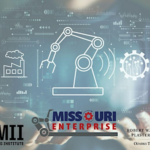As pressure from impending ESG regulations, economic headwinds and geopolitical tensions grow, manufacturers are increasingly looking at cutting-edge technologies to help navigate these challenges. While many manufacturers are still effectively blind to a staggering percentage of events on the factory floor and in their supply chains, Smart Manufacturing solutions will be key in the next year to reduce manufacturing inefficiencies, increase productivity and, ultimately, weather the economic storm.
Here are a few manufacturing technology trends we expect to see in the coming year.
Prediction #1: Manufacturers Will Increasingly Embrace Artificial Intelligence to Combat Inflation
With inflation wreaking havoc up and down the entire supply chain, manufacturing companies are looking for ways to stabilize their operations and increase efficiency. The constant increase in prices of raw materials has forced manufacturers to look for ways to improve efficiency and productivity, at reduced costs, with a dependable output of high-quality products. Artificial Intelligence (AI) is opening up greater possibilities for more optimized manufacturing processes to these ends.
Over the next year, we expect inflation to drive more and more manufacturers to look to AI to successfully navigate the challenges posed by a higher cost in materials.
Prediction #2: Big Increase in Discrete Manufacturers Adopting Industry 4.0 Solutions
The discrete manufacturing landscape continues to face enormous headwinds, putting stress on every aspect of business, including the global supply network. Adding to that are new sustainability requirements and significant worker retention issues. Discrete manufacturers are being forced to re-examine every aspect of their business, paving the way for a more resilient and collaborative approach to address these challenges. The post-pandemic move toward supply chain regionalization is also adding stress to an already heavily burdened manufacturing workforce.
We expect to see more and more discrete manufacturers rethinking the way they use data to empower people and inform strategies, both for real time operations and on a longer horizon for resource planning and predictions.






